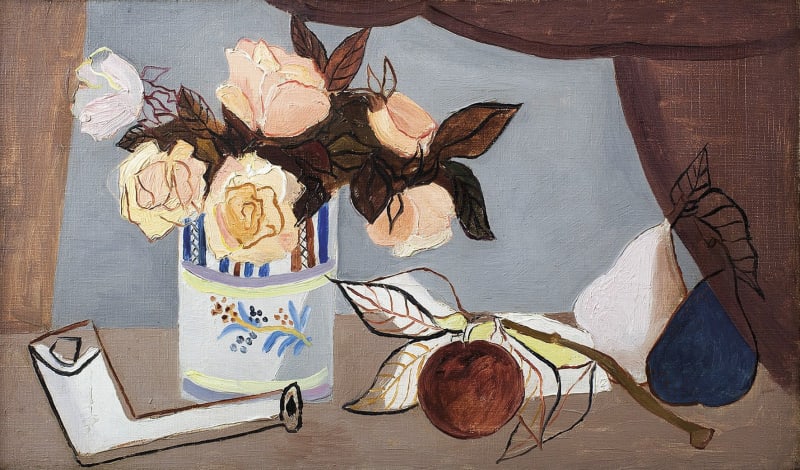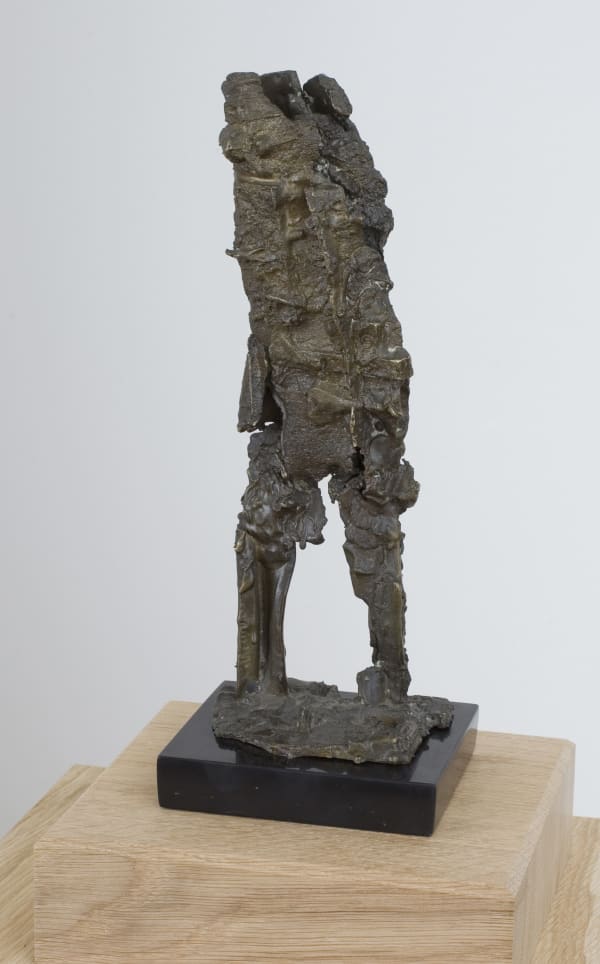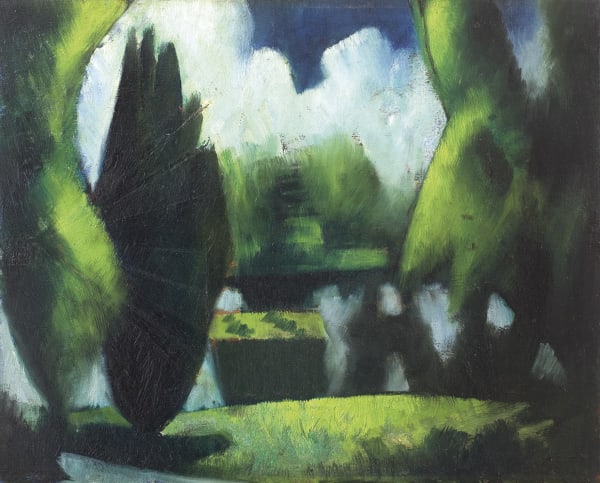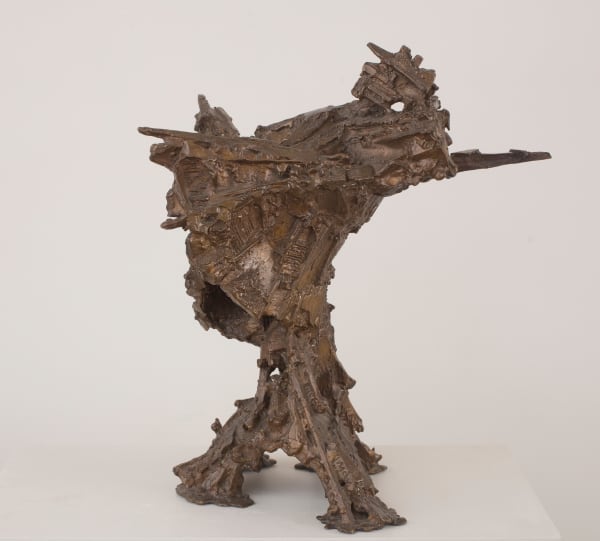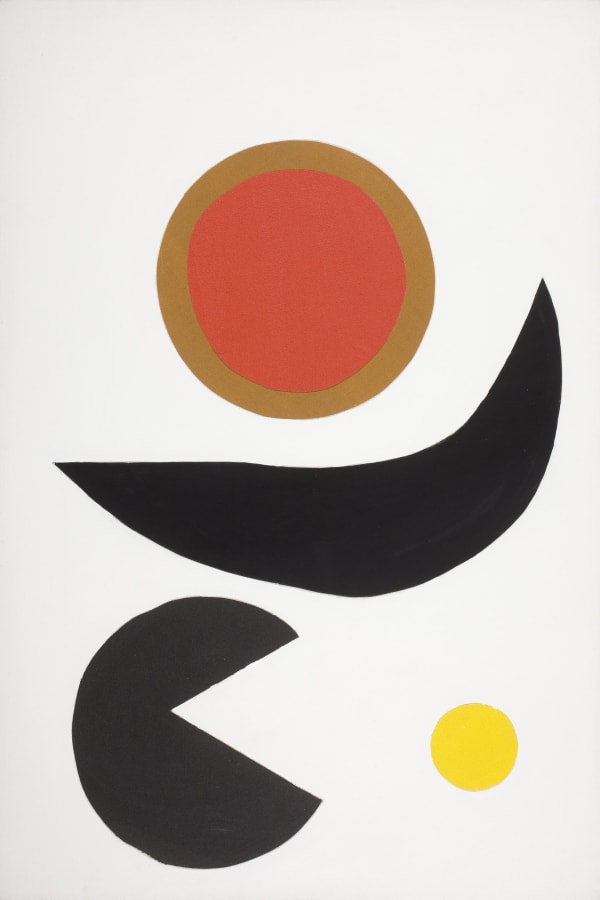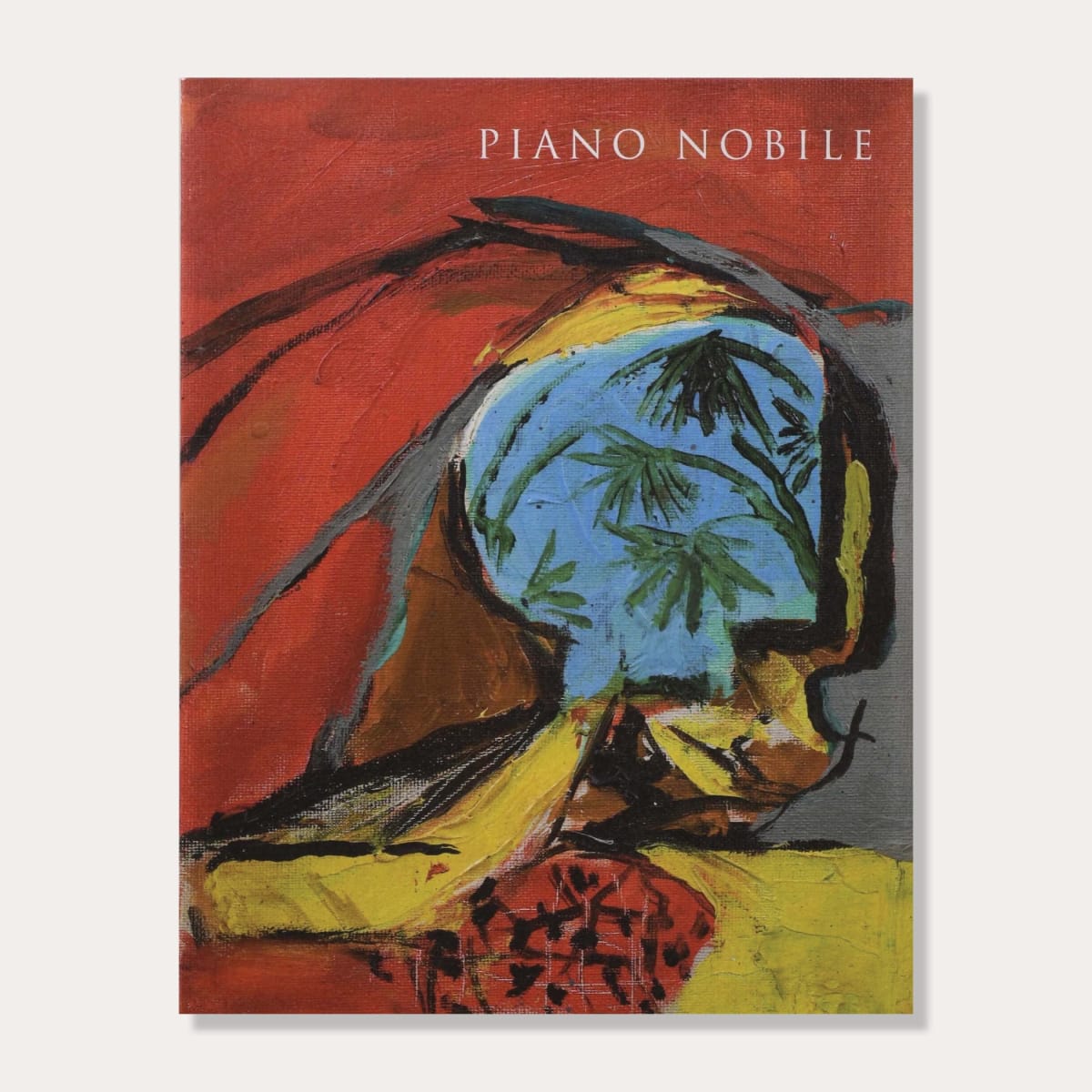20th Century British Art : Developments in Modern British Art
Piano Nobile have been dealing in Modern British Art for over 25 years and holds a stock of works from the 20th and 21st century. In the summer of 2013 we held an exhibition tracing the development of the Modern British period from the First World War years through to the end of the century.
Many of these works demonstrated how avant-garde artists in Britain partake and develop wider international philosophies and artistic styles throughout the period. In the early landscape by Mark Gertler of 1916 (often considered his most innovative year) the pre-WWI celebration of mechanisation that began with the Italian Futurists and developed in England through the Vorticist style is apparent. The angular, wind blown, trees create a vortex pulling the viewer into the painting. The naturalistic subject matter of this work suggests the increasing move in the years following WWI to a naturalism developed, among others, by Wood, Bomberg and Spencer throughout the following decade.
In the post-WWII works by Davy, Paolozzi, Crozier, McWilliam and Sutherland one senses the nuclear threat that balanced the world on the edge of apocalypse and led Herbert Read to describe the 'geometry of fear'. Although a moment of uniquely British visual develop ment, the influence of wider international movements is undeniable. Coker and Crozier, for example, are in dialogue with the abstract expressionism of Nicolas de Stael and Willem de Kooning, respectively. The lyrical expressionism of Ivon Hitchens is seen in the early nude from 1935. Two works from the 1940's by David Bomberg reveal the foundations on which his famous pupils Frank Auerbach and Leon Kossoff have developed their own international reputations.
The 80's and 90's illustrate the developing later styles of some of the most avant-garde British artists of the period, including Paolozzi and Frost. During this time Riley developed her early black and white Op-art works into vertical colour stripes, first seen in the body of work that includes her KA series, that she continues to develop to this day.
-
 Walter Sickert, Chagford Churchyard, 1916
Walter Sickert, Chagford Churchyard, 1916 -
 Christopher Wood, Siamese Cat, 1925
Christopher Wood, Siamese Cat, 1925 -
 Christopher Wood, Still life with Flowers, Fruit and Clay Pipe, c.1927
Christopher Wood, Still life with Flowers, Fruit and Clay Pipe, c.1927 -
 Bridget Riley, KA IV, 1980
Bridget Riley, KA IV, 1980 -
 Eduardo Paolozzi, Figure, 1956
Eduardo Paolozzi, Figure, 1956 -
 Mark Gertler, The Pond, Garsington, 1916
Mark Gertler, The Pond, Garsington, 1916 -
 Ivon Hitchens, Nude in an Interior - Hampstead, 1935 c.
Ivon Hitchens, Nude in an Interior - Hampstead, 1935 c. -
 F E McWilliam, Resistance III, 1962
F E McWilliam, Resistance III, 1962 -
 Terry Frost, Ochre Dusk, Pink to Black, 1990
Terry Frost, Ochre Dusk, Pink to Black, 1990
